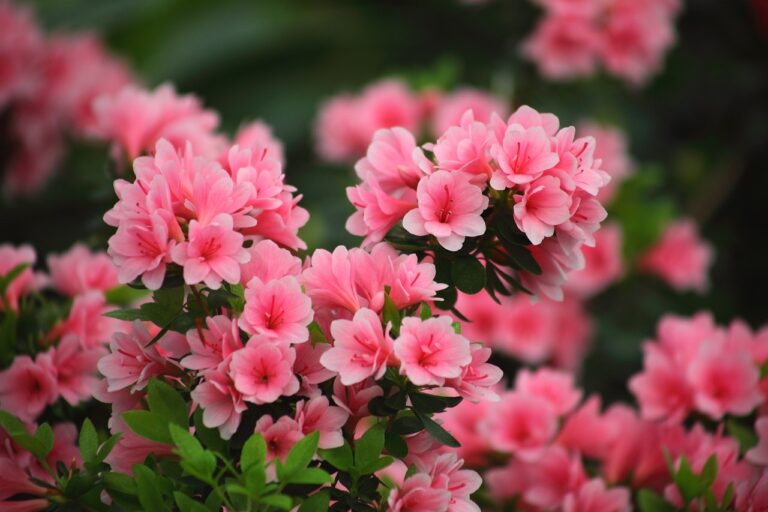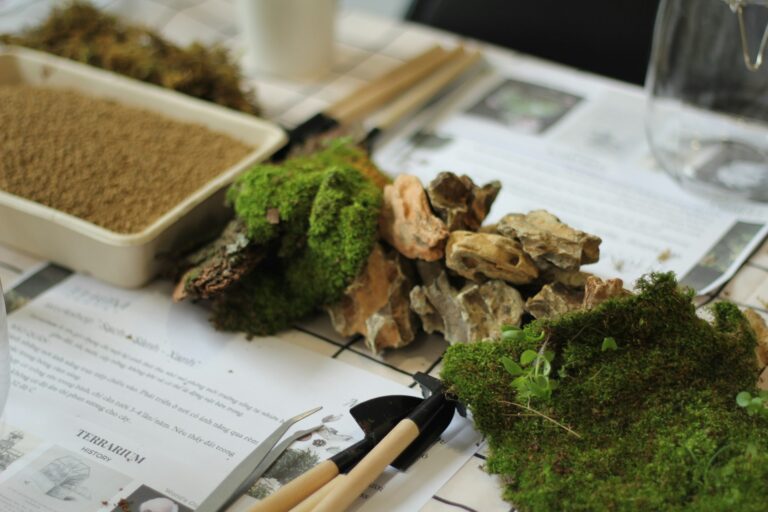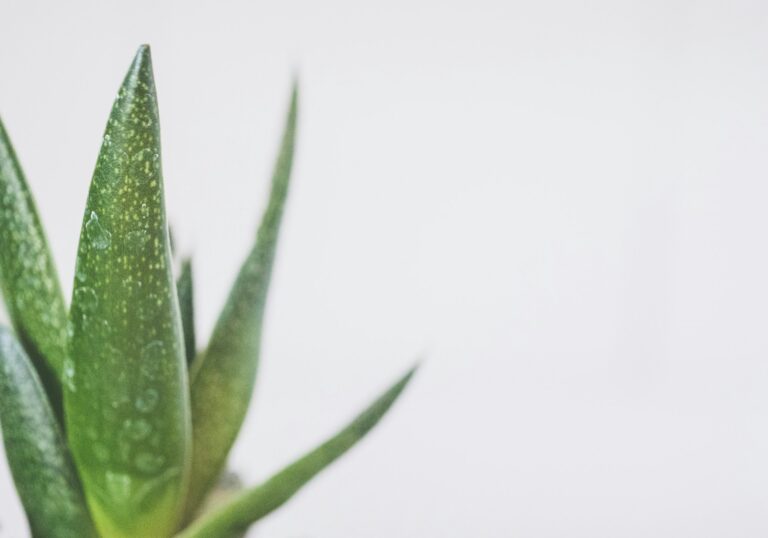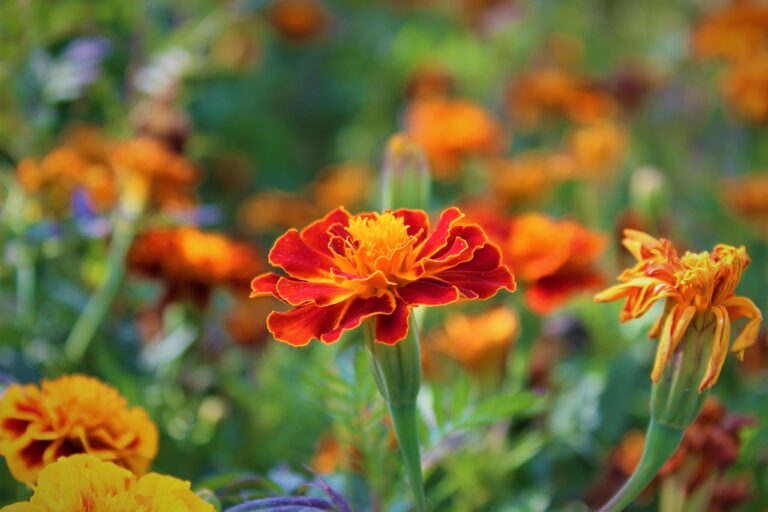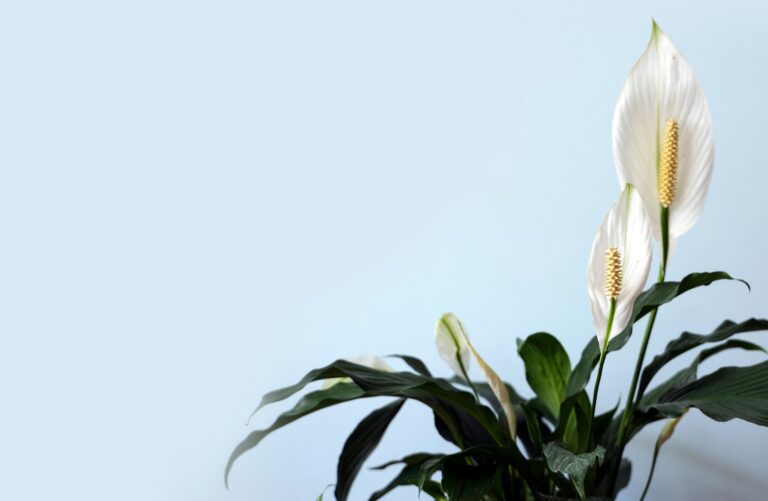With their vibrant blooms and graceful foliage, Azaleas have long been cherished as ornamental plants in gardens and landscapes. These beautiful shrubs are renowned for their ability to add a burst of color and elegance to any outdoor space.
However, to create truly stunning and harmonious displays, many gardeners choose to complement azaleas with carefully selected companion plants. These companion plants not only enhance the beauty of the azaleas but also contribute to their overall health and well-being by providing support, contrasting foliage, or extended blooming seasons.
From delicate perennials to evergreen shrubs and groundcovers, the options for azalea companion plants are plentiful. Whether you aim to create a serene woodland garden, a vibrant cottage garden, or a structured formal garden, there are companion plants that can help you achieve your desired aesthetic.
13 Best Companion Plants for Azaleas.
Azaleas, like many plants, can benefit from companion planting. Companion plants can provide a range of advantages, such as attracting beneficial insects, improving soil fertility, shading the soil to reduce weed growth, and providing an overall aesthetic appeal.
Here are the azaleas companion plants you can add to your garden at home.
Hydrangeas.
Hydrangeas have similar cultural requirements to azaleas, such as preferring acidic soil and partial shade. They can complement azaleas aesthetically with their showy flowers and foliage, creating a visually appealing garden.
Mountain Laurel.
Mountain laurel (Kalmia latifolia) shares similar growing conditions with azaleas. They both prefer acidic soil and partial shade. Mountain laurel also adds to the beauty of the garden with its attractive flowers and evergreen foliage.
Blueberry.
Blueberries also thrive in acidic soil and provide an excellent companion for azaleas. Both plants enjoy similar soil conditions and benefit from regular watering. Additionally, blueberries attract pollinators like bees, which can benefit both plants by increasing pollination rates.
Bleeding Heart.
Bleeding heart (Dicentra spectabilis) is a shade-loving perennial that pairs well with azaleas. It blooms in spring with delicate, heart-shaped flowers, providing an attractive contrast to the azaleas. Bleeding heart prefers well-drained soil, which can complement the growing conditions for azaleas.
Snowball Bushes.
Snowball bushes (Viburnum opulus) produce large, showy clusters of white flowers. Planted alongside azaleas, they can create a stunning display of contrasting colors and textures. Snowball bushes prefer moist, well-draining soil, which is also suitable for azaleas.
Bush Lily.
Bush lilies (Clivia miniata) are shade-loving plants that can complement azaleas beautifully. They feature vibrant orange or yellow flowers and dark green, strappy leaves. Bush lilies prefer well-drained soil and can tolerate the same acidic conditions as azaleas.
Tulip Trees.
Tulip trees (Liriodendron tulipifera) can be tall, majestic trees that provide shade to azaleas. They offer a vertical element to the landscape and create a sense of privacy. Tulip trees prefer slightly acidic soil and can thrive alongside azaleas in the same growing conditions.
Witch Hazels.
Witch hazels (Hamamelis spp.) are deciduous shrubs that bloom in late winter to early spring. They produce clusters of fragrant, spidery flowers in shades of yellow, orange, or red. Witch hazels prefer well-drained, acidic soil, making them suitable companions for azaleas.
Plantain Lily.
Plantain lilies (Hosta spp.) are shade-loving perennials with attractive foliage. They come in a variety of leaf colors, textures, and sizes, adding visual interest when planted alongside azaleas. Hostas prefer moist, well-drained soil, similar to the requirements of azaleas.
Japanese Camellia.
Japanese camellias (Camellia japonica) are evergreen shrubs known for their stunning flowers, which come in various colors and forms. They thrive in acidic soil and prefer partial shade, making them an excellent companion for azaleas.
Summersweet.
Summersweet (Clethra alnifolia) is a deciduous shrub that produces fragrant, white, or pink flower spikes in summer. It prefers moist, acidic soil and partial shade, making it compatible with azaleas. Summersweet can attract pollinators and add visual interest to the garden.
Sweet Pepperbush.
Sweet pepperbush (Clethra alnifolia) is another shrub that complements azaleas well. It has attractive, fragrant flowers that bloom in summer, attracting butterflies and other pollinators. Sweet pepperbush prefers moist, acidic soil, making it a suitable companion for azaleas.
Considerations for Choosing Companion Plants
When choosing companion plants for azaleas, gardeners should consider the following:
- Soil Requirements: Azaleas prefer acidic soil, so choose plants that can thrive in the same soil conditions.
- Light Requirements: Azaleas prefer partial shade, so choose plants that can tolerate the same light conditions.
- Water Requirements: Azaleas prefer moist soil, so choose plants with similar water requirements.
- Bloom Time: Choose companion plants that bloom at different times than azaleas to create a longer blooming season.
- Height and Width: Choose plants that complement the height and width of azaleas to create a balanced landscape.
Common Mistakes to Avoid
When planting azaleas with companion plants, there are a few common mistakes to avoid. Here are some things to remember to ensure your azaleas and their companions thrive.
Planting Too Close Together
One of the common mistakes people make when planting azaleas with companion plants is planting them too close together. While creating a dense, lush garden may be tempting, overcrowding can lead to several problems. Overcrowding can cause competition for nutrients, water, and sunlight, resulting in stunted growth, poor flowering, and even death.
Choosing Incompatible Plants
Another mistake people need to correct is choosing incompatible plants. Azaleas have specific soil and light requirements, and not all plants can thrive under the same conditions. Choose companion plants with similar needs and growing habits to ensure they can coexist without harming each other.
Ignoring Maintenance Needs
Finally, ignoring maintenance needs is another common mistake. Azaleas and their companion plants require regular maintenance, including watering, fertilizing, pruning, and pest control. These tasks are necessary to avoid poor growth, disease, and insect infestations.
Invasive plants.
Be cautious when selecting companion plants to avoid choosing invasive species. Invasive plants can aggressively spread and compete with azaleas for resources, potentially causing harm to the ecosystem and affecting the growth of your azaleas. Research and choose native or non-invasive plants as companions.
Different Growth Rates.
Avoid pairing companion plants that have significantly different growth rates. Plants that grow rapidly may overshadow or crowd out slower-growing azaleas, leading to reduced sunlight and stunted growth. Select companion plants with similar growth rates to maintain a balanced and harmonious planting scheme.
